This is the middle article of three on the missing middle.
Last week’s discussed how infill housing development makes middle ring suburbs much more sustainable. This week we look at what form those infill schemes could take: the missing middle typologies. Next week we will look at the broken process and negative forces that conspire to prevent infill housing happening in the middle rings; the need for a middle way housing policy.
Infilling the missing middle
Recent reports by the NSW Productivity Commission and Investment Victoria have shown that the optimum place for new housing is in old suburbs, and recent columns have shown that older typologies, are the new concepts. It’s back to the future, twice over.
Firstly, there are always underutilised sites within existing suburbs that provide ideal opportunities for increased density, of better quality, without a loss of local amenity. These may be brownfield or greyfield, private or public, large or small. But all have the possibility for better housing.
And secondly, the appropriate form for this housing is low and close: low in scale, respecting human scale and existing localities, and built at higher densities than suburbia, with people closer living together, such as the often reviled, but surprisingly habitable, three-storey, red brick walk-up flats. It’s density done delightfully.
As before, my weapon of choice is a good case study (all drawn from direct experience).
Duplexes
Replacing an existing house with a duplex (attached via a party-wall), of two or three storeys; Is the low hanging fruit of density doubling.
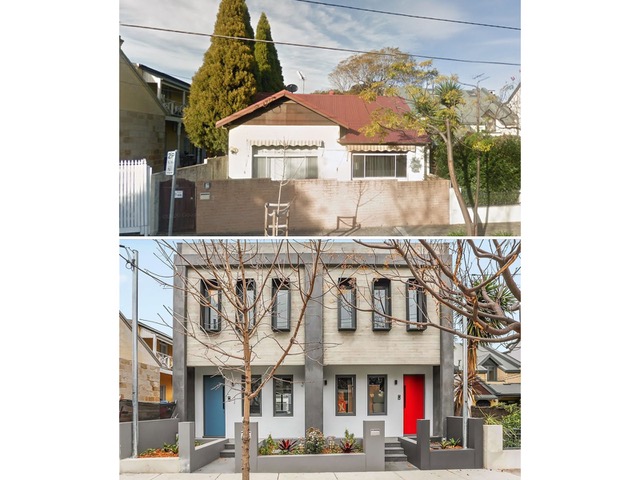
Inner city areas, as here in Sydney’s Zetland, often have older single storey houses, built when it was suburbia, which make ideal sites for duplexes. The houses can go to three storeys (with setbacks) and there are back lanes for cars. On the plus side, planning codes allow, even encourage, the building to respond to the climate and locality. Hence the contemporary front and materials (off form concrete).
A further plus is the possibility for studios over garages in rear lanes, increasing density. But in an inexplicable reversal, the City of Sydney requires ersatz historicism with a replication of pitched roofs and dormers for those studios. A joke without laughter.
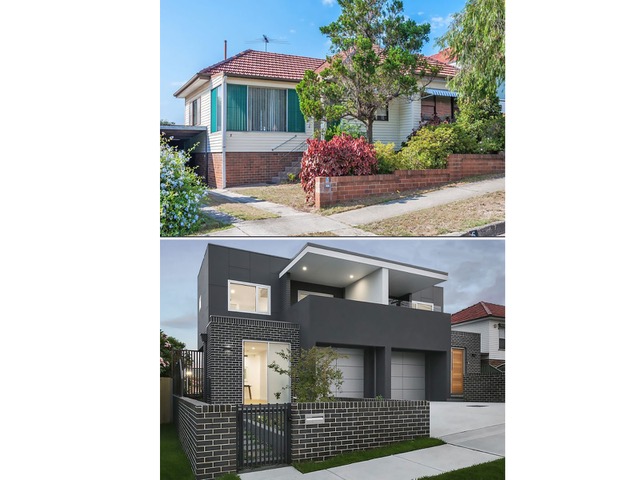
In suburbs further out, say 10 to 15km, the sites are large enough for two ‘family houses’ in a duplex of two storeys. The plan allows for a flex room downstairs (granny, nanny, or work from homey), kitchen living dining, and multiple bedrooms and bathrooms upstairs. The downside is the need to accommodate the carparking from the front (no rear lane) and the codes usually require it to be set back and ‘visually suppressed’.
Townhouses
The logical extension of joining duplexes together is a row of townhouses, which increases land efficiencies without the ‘de-militarised zone’ of the side boundaries between suburban houses and duplexes. The issue of cars is difficult to solve if a rear lane cannot be engineered.
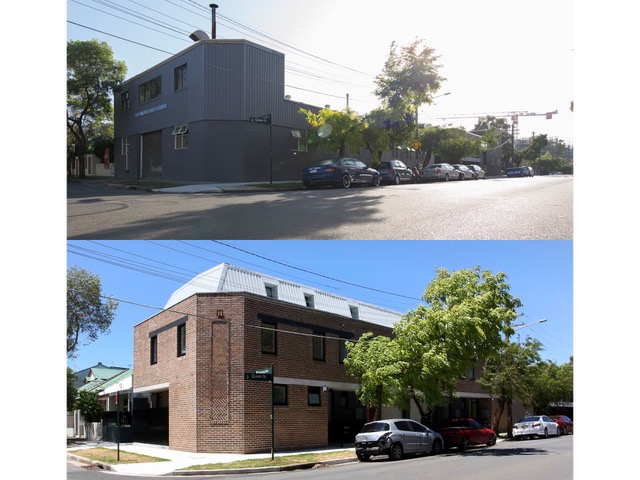
Four three storey townhouses on the site of an old, small factory. No basement, because it won’t fit and avoids raising contamination issues. At the end of an inner-city block, the garages can be spread across three street frontages, with ‘home office type spaces’ on the lowest floor, living areas above and bedrooms on the third level.
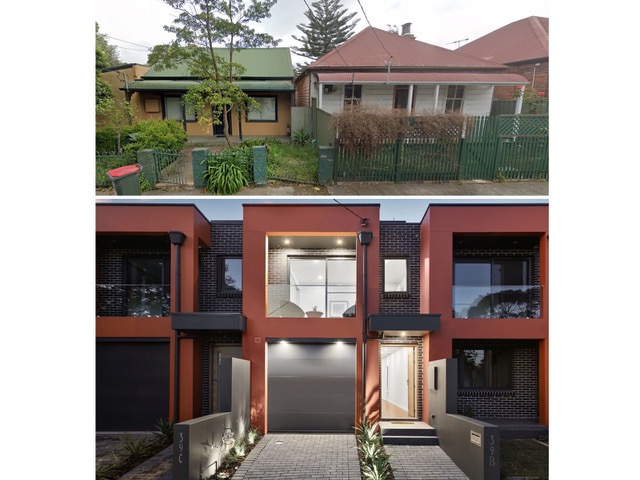
By joining smaller suburban sites together a site for townhouses can be created (about 8 km from Sydney’s centre). The setback is decreased so the front garden area, appropriate 100 years ago, is reduced to a ‘foyer function’, to increase the rear, sun-lit gardens.
Again parking is an issue as the sites are ‘landlocked’, so a decision to limit the number of garages is made, without significantly lowering the value of the ones without, given the proximity to services and transport. The existing houses, from an era before car ownership was common, had no garages, only street parking.
Smaller apartment blocks - 4 storeys
Given my admiration for the sustainability and efficacy of ‘walk-up flats’ it not surprising that we have reprised that idea in numerous schemes; where possible we retain the old ideas of small floor plates, corner apartments, prominent and easily accessible stairs, ceiling fans and balconies fit for drying clothes.
However modern considerations intrude to include: cars being stored in a single level basement (naturally ventilated where possible); a lift from basement to top; forms with contemporary materials and water, power and communications to today’s standards.
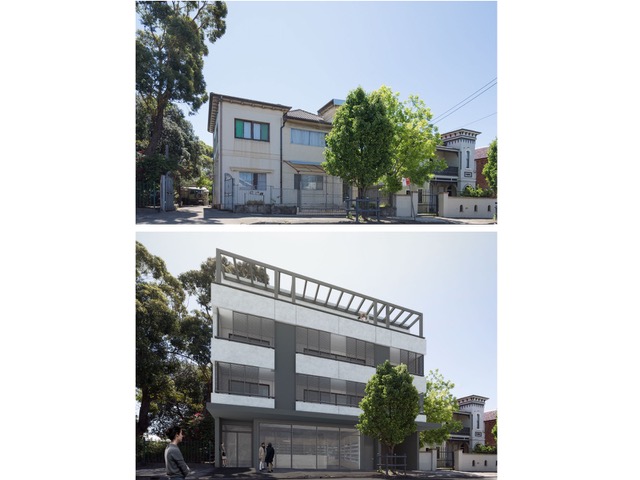
A single large, but decrepit, house can yield 12 apartments, with a retail area below (as shop-top housing is required), and basement parking. The circulation is through open corridors like balconies (as it often was in walk-ups) and where possible in all our schemes. The trees (in the car park of Council’s offices) are retained, with a modest rear garden area in addition to generous balconies.
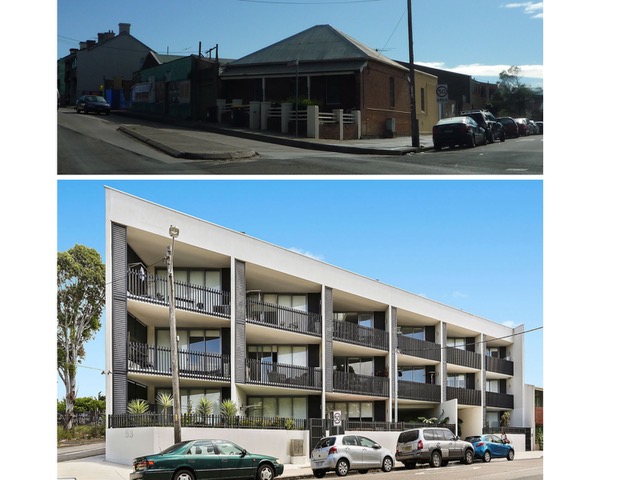
The site for this project, formerly a small factory and separate house, has two faces: one to Sydney Park with trees and views, and the other to Westconnex, a spaghetti of freeways, more look-out than outlook. Again, external circulation, this time in a central courtyard, it places the angular balconies, stretching for the sun and view, along one façade, whilst turning its back to the crassness of the cars.
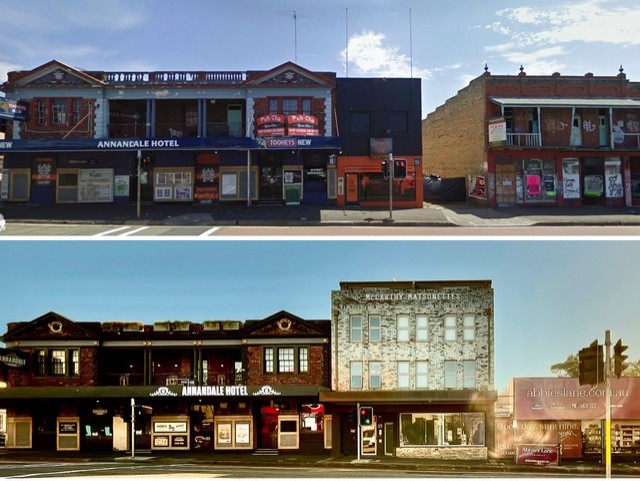
This site is a disaster by most benchmarks. Small, sloping to a tiny rear lane, at traffic lights on Parramatta Rd, opposite Maccas, and adjacent to (what was then) one of Sydney’s best live music venues. Perfect for a bit of well-designed infill housing, of ‘micro units and maisonettes’ (as boarding house studios under the old NSW Affordable Rental Housing Code).
Designed for a continuous wall of buildings on this main road, in part to shield the lower density housing behind, the effect was somewhat undermined when the adjacent terraces were illegally demolished, and Council effectively sterilised the site and rendered it vacant for 10 years. Both acts of culpability when the housing in the inner west is so much in demand
The 24 rooms of McCarthy Maisonettes (named after the rear lane) are so well acoustically sealed, with such heavily insulated high thermal mass, that continuous low volume tempered air is all that is needed to maintain a comfortable interior (plus ceiling fans). Poor person’s PassivHaus.
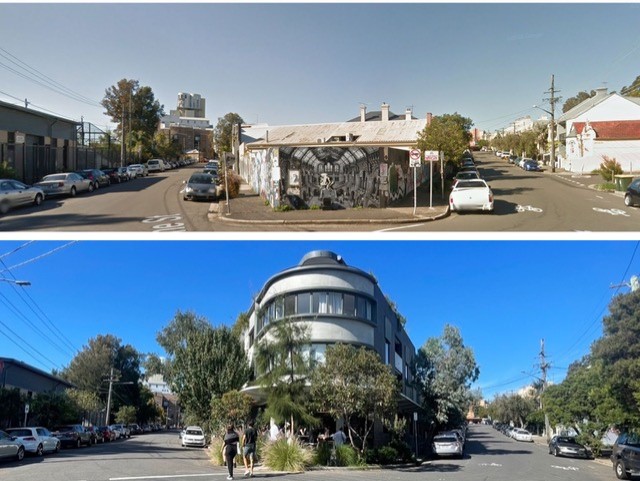
A triangular factory site that required shop-top housing, with a twist. Greens on council required ‘live-work’ studios for artists in a valiant, but ultimately futile, attempt to ensure a replacement for the low-cost artist ‘squat’ spaces that were being replaced as factories and warehouses elsewhere turned residential. Not all infill is helping the affordability crisis.
Bitterly opposed by local residents, in acts of pure NIMBYism, such as defamatory posters in the area prior to the on-site court hearing, the local café at the corner is now one of the hot spots for coffee in Newtown. The project has more trees than twenty of the protesters houses, as well as more parking. Am I bitter? More than the coffee.
Bigger apartment blocks - 4 storeys
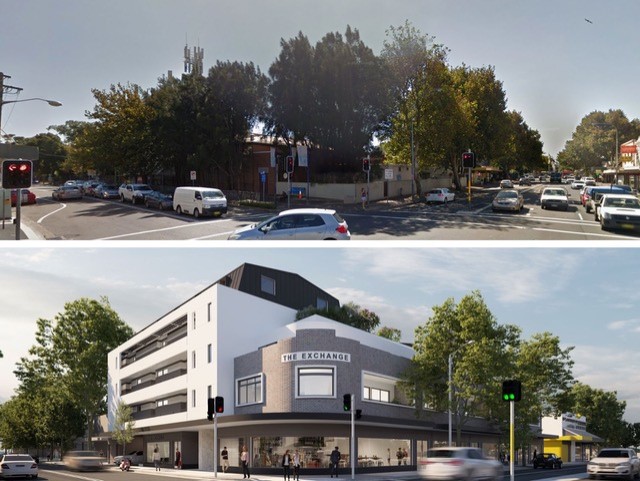
A corner site in the shopping strip in Mascot that had been a telephone exchange. As so many old technologies are downsized, releasing sites that are beautifully located, opportunities for infill housing are opened up. The form of the building responds to local concerns about scale (distinct from size) with a two-storey strip in the form of shop-houses similar to those opposite, in front of the main building with Mansards disguising its five storeys.
Circulation is oriented around a central courtyard, with apartments then facing north, away from the distractions of the street, whilst others higher up look east into trees and street life. Car parking is behind the retail and on a basement floor, a difficulty not easily solved as the number of apartments rises and Council demands are unyielding.
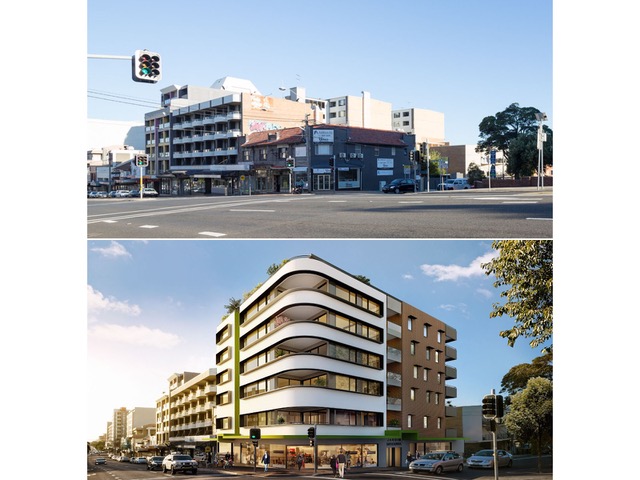
Another corner apartment block in a shopping strip, this one in Maroubra. Six storeys is consistent with the inconsistent sizes along the main road, and steps down on the side street in response to the smaller scale. The retail was so valuable that it occupies as much of the ground as possible, with car-parking pushed into a basement.
Less an infill scheme, more completion of the urban centre. Unusually, there were few local protests, only Council was belligerent in its opposition, solved by the court.
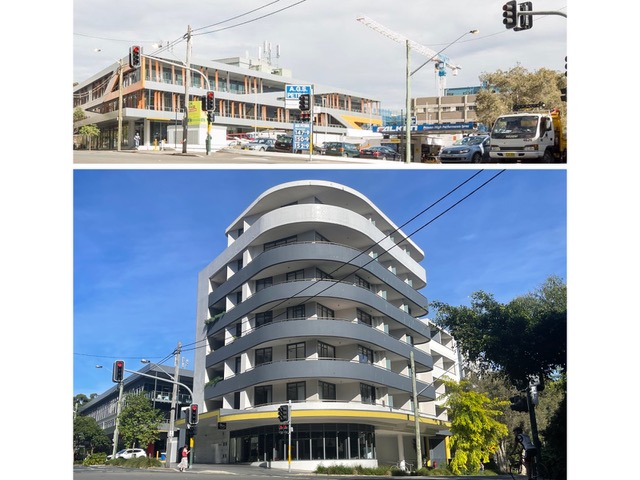
A former petrol station, replaced with a seven-storey building broken into two sections - one curved on the corner, the other rear loaded in an open-corridor, so all the apartments face north. The building seeks to address the prominent corner, although it is only half the height of the two opposite.
One of eight former petrol stations that we have designed for redevelopment, this will be an increasingly redundant use, usually well positioned, and so suitable for infill housing, provided the remediation of the contaminants is dealt with.
Next week
A case study of one project, showing how good intentions, exhibited in all these schemes, can be frustrated by the NIMBYs, aided by the Council and abetted by the Court. A rollicking story, if we get it past the lawyers.
All the schemes are by environa studio. All have been built, some are shown in CGI for clarity.
Reference: Tone on Tuesday 167: Missing middle housing in the missing middle: week 25/ 2023.
Tone Wheeler is an architect / the views expressed are his.
Short pieces are published every Friday in A&D Another Thing.
Longer columns are Tone on Tuesday, published then.
You can contact TW at [email protected]

